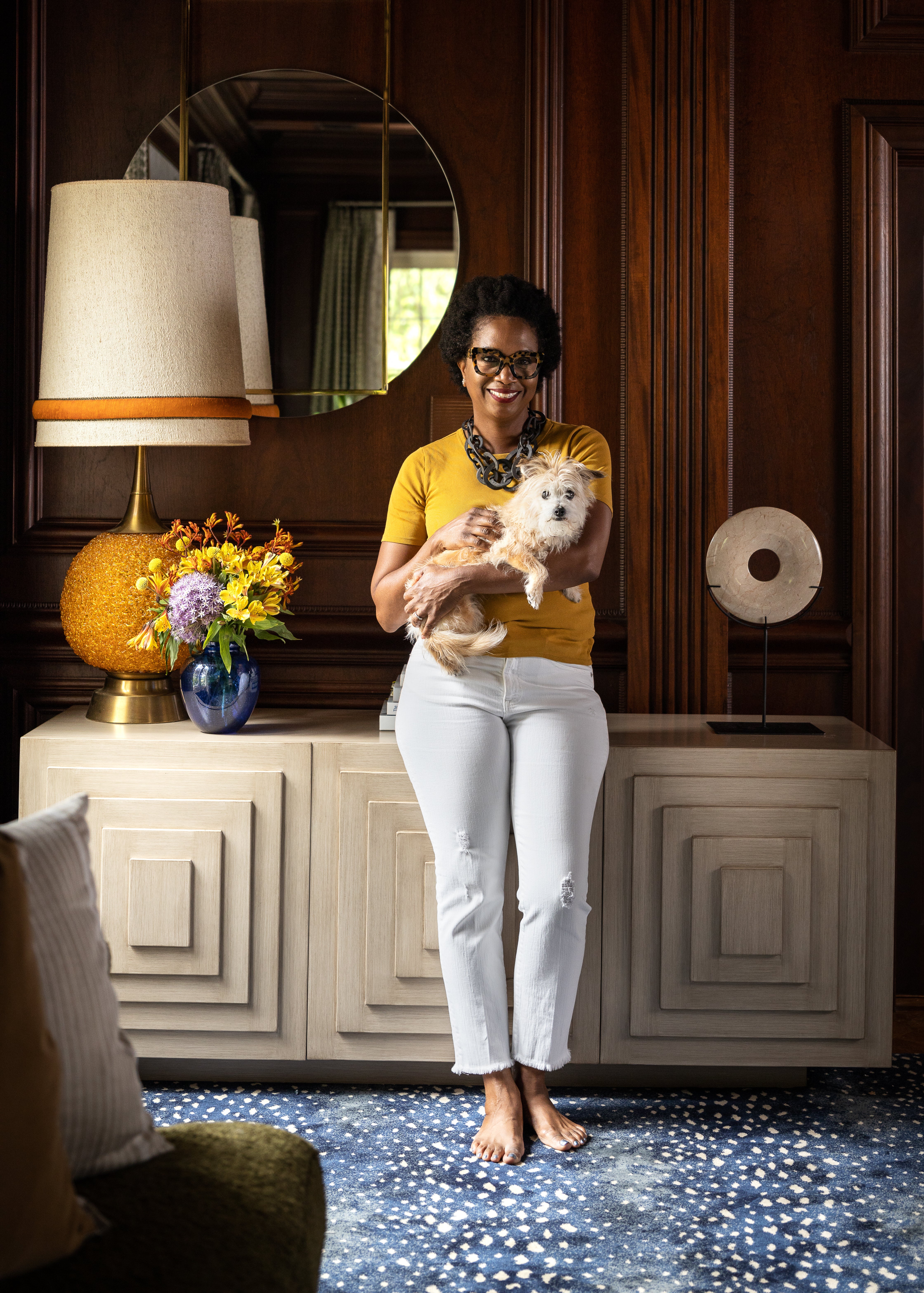The 50 States Project is a yearlong series of candid conversations with interior designers across the country about how they’ve built their businesses. This week, South Orange, New Jersey–based Gail Davis tells us about realizing she had to start her own firm if she wanted to be a lead designer, how she learned to master the business numbers as a creative, and why she dislikes the phrase “affordable luxury.”
What are your earliest memories of design?
I don’t know if I knew it was the word “design,” but everything around my grandparents’ house was in perfect order, and it was such a safe haven. I loved my childhood home, but there was something about going to my grandparents’ house that was magical—the fine china, gold-rimmed glasses, the beveled glass in the dining room, the way the linen napkins felt in my hands. Everything about my grandparents’ house was thoughtful. Weekends were spent there—and holidays, which were magical.
Did those experiences help inform your career?
Honestly, I only just realized it probably last year. I am a New Yorker, born and raised, but my grandparents are from Charleston and Beaufort, South Carolina, and it was their Southern sensibilities that were instilled in me. It’s in my obsession with shopping for dinnerware—I’m embarrassed to say out loud how many different place settings I have. I had a conversation with my brother last year where I finally realized that this is in me. I can’t move this.
I recently photographed my latest project, and it came out so sweet, and that sensibility from them was all in it. It’s funny. I think COVID has made me more aware of how much I love what I do. I know a lot of designers say that, but it’s important that when I design for a client, it doesn’t look like a designer just left, but that a family just moved in. I want it to be as seamless as possible. I feel like it has really freed me to make sure that I empty my creativity out in the space that I’m working on to [the point] where people really love where they live. I did it before, but now my creative soul has to really just be emptied out, and I feel like I’ve given the space all that I can.
But you started your career in fashion.
I loved clothing as a girl, but I didn’t know the fashion world itself. When I first started, I was pushing racks and working for a super-small company run by a husband and wife. The wife was horrific and the husband was just as bad. I was the only Black person on staff, and they treated me terribly. But because I wanted to learn, I just thought, This is the price I have to pay to get my foot in the door. Just sacrifice now and you’ll get to where you need to go. After that, I worked for a few more small companies, and I learned a lot. Then one day, one of [my employers] was like, “You need to be in sales. You talk to all of our vendors and they love you—they always ask about you.” So that was the impetus for me to be promoted.
I started going to the menswear show in Las Vegas twice a year, and I realized quickly that although it was fun, [the industry] was super cutthroat, and it was just too much for me. So from there, I started working at Saks Fifth Avenue. I always tell people that if you watch the movie The Devil Wears Prada, that was my life. It was tough being someone’s assistant in that industry, because everything is thrown at you. You’re never applauded for good work, only ripped apart. Every other year, I would get written up over something so stupid or minute, and I was always like, Wait, how did that fall back on me? I just became so burned out. I was like, There has to be more to life than this.
How long were you there?
Eight or nine years. And I came in off the streets and went straight to the executive floor, so the other assistants at the time did not take too kindly to that. They were like, “Where did you come from?” They were brutal. I armored up every day. But it was just so ridiculous—we were all doing the same job, but I quickly learned that no one was going to help me or give me a heads-up. I fell a lot, but they didn’t count on me getting back up and dusting myself off.
What finally made you walk away?
I got married and we were in the process of trying to start a family. I was having multiple miscarriages, and I went to a holistic doctor, and he was like, “I can’t do some of the tests I need because you’re off the charts with stress.” I was like, “It’s time for me to get out.”
I would wake up in the morning in tears. I’ll never forget—one day, I sat on the edge of the bed and said to my husband, “I absolutely cannot do this anymore. This is a slow death.” But then I was like, “What would I do if I knew I could not fail?” Because failure was such a big thing to me, but as soon as I said it, the failure just went away. I was like, “I could go back to school for interior design.”
It was already in you.
I went to the New York School of Interior Design. I took one course, and I was the weakest one in the room at sketching and drawing. Everybody else was like Picasso, putting up this amazing work, and I was this 2-year-old trying to hold a pencil and sketch. I’ve always presented well—I can show you what I’m thinking—but I was not a renderer by any stretch of the imagination. It’s always inspirational quotes that get me through, and there’s this one from Muhammad Ali: The will must be stronger than the skill. I had to keep reminding myself of that whenever I was overwhelmed. That’s what got me through, and I got my associate’s degree.
While I was going to school, classmates were getting internships, but I couldn’t get one with anyone. There was one woman in my class who was like, “Did you find an internship?” I said, “God, no, not yet.” And she said, “Well, give me your resume and I’ll give it to the people I work for at Bunny Williams.” I didn’t know who Bunny Williams was, but I gave [the resume] to her, and they called me for an interview. I went in, and I started the following week.
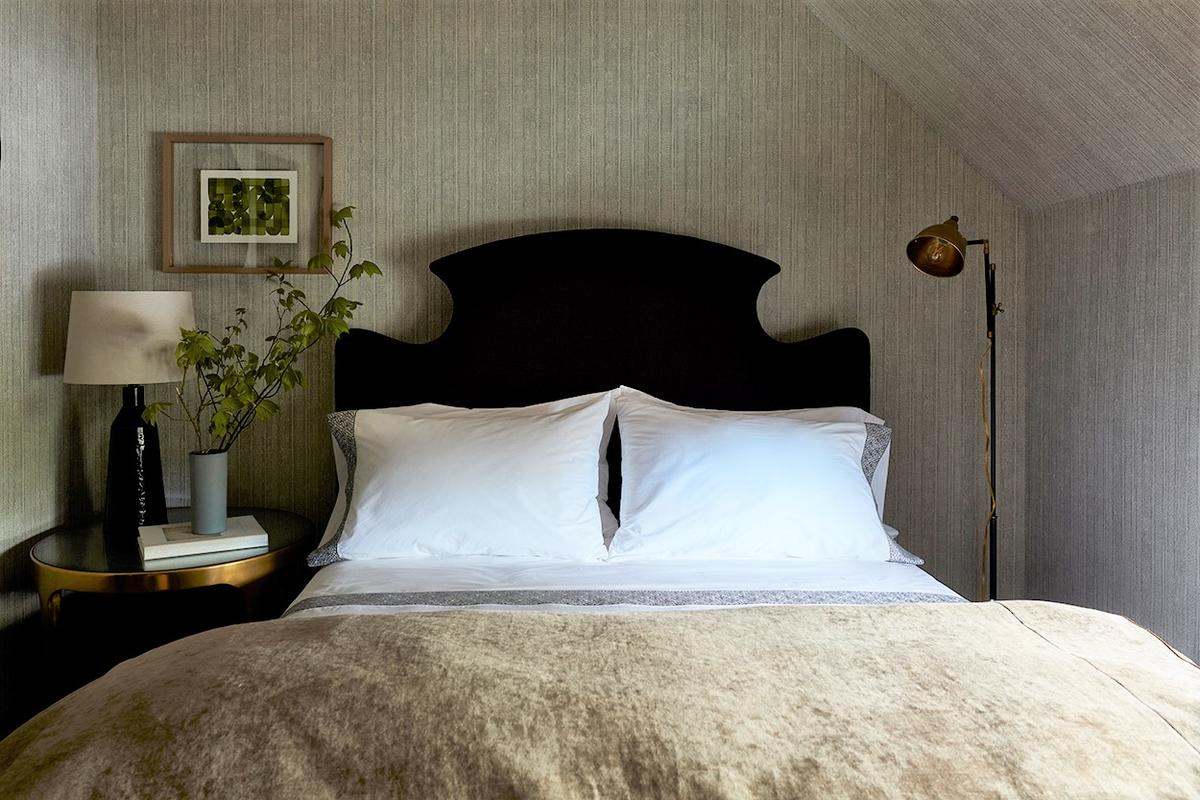
When did you realize that that was such a big deal?
Friends in school were like, “You got an internship with the Bunny Williams?” It was so funny when I finally realized who she was, and the magnitude of it.
What was that experience like?
I realized that everybody was so enamored, but I was like, Well, that’s great, but I’m here to learn. So I made a pact with myself that I would focus strictly on learning as much as I could. I looked around the room, and the people of color were the support, not the lead designers. I realized I would have to work for myself, and that’s what it was. I was just like, Head down, focus and learn. From there, I went to David Kleinberg, and then I was like, All right, go on your own—let’s see what we can do. And that’s what I did.
What did those internships teach you that would have been hard to figure out on your own?
Scale, texture, color—you learn all of that in school, but when you have to work with it hands-on and for a real client, it’s completely different. And learning how to deal with people, how to build properly, how to shop efficiently—there’s so much.
I remember learning that [Bunny and David] would go and shop for everything that they wanted at the top of the year so that they’re not leaving their offices to run out and look for stuff [the rest of the time]. Something I’ve worked on in the past couple years is telling myself that I only need three vendors, and I need to pull as much as I can from them—while knowing that I can always mix it up—instead of being up and down all 18 floors at the D&D Building. I’d rather be a big fish to those three than a guppy to many. It’s important that you shop the vendors who can really make you shine and that have things in their arsenal that will make sense for you—that you can trick out and make amazing for clients.
That’s such a strategic way to approach sourcing.
It’s just smarter. When I call them, they’re like, “Hey, Gail, what’s up? What do you need?” or “Gail, I’ve got this coming in and I know you’ll love it. I thought of you.” And I’m grateful for that.
How many vendors realistically can you cultivate that kind of relationship with?
I have a good five vendors that are on my speed dial. We literally text each other after-hours, and to me, that’s more important than anything else.
And I’m sure those are relationships you can rely on if you need something quickly, too.
Absolutely. I love that because [other] people don’t really care the way they do. I went into a showroom at the D&D and saw a person who used to work for another fabric house. They were like, “Oh, hi,” and I was like, “I didn’t know you were here!” But then, apparently after I left, the comment came back [from other showroom employees] that that brand only works with rich clients, and they won’t waste their time on new ones or little fish. I started laughing at that, because today’s little fishes are tomorrow’s whales. You should never sleep on people like that.
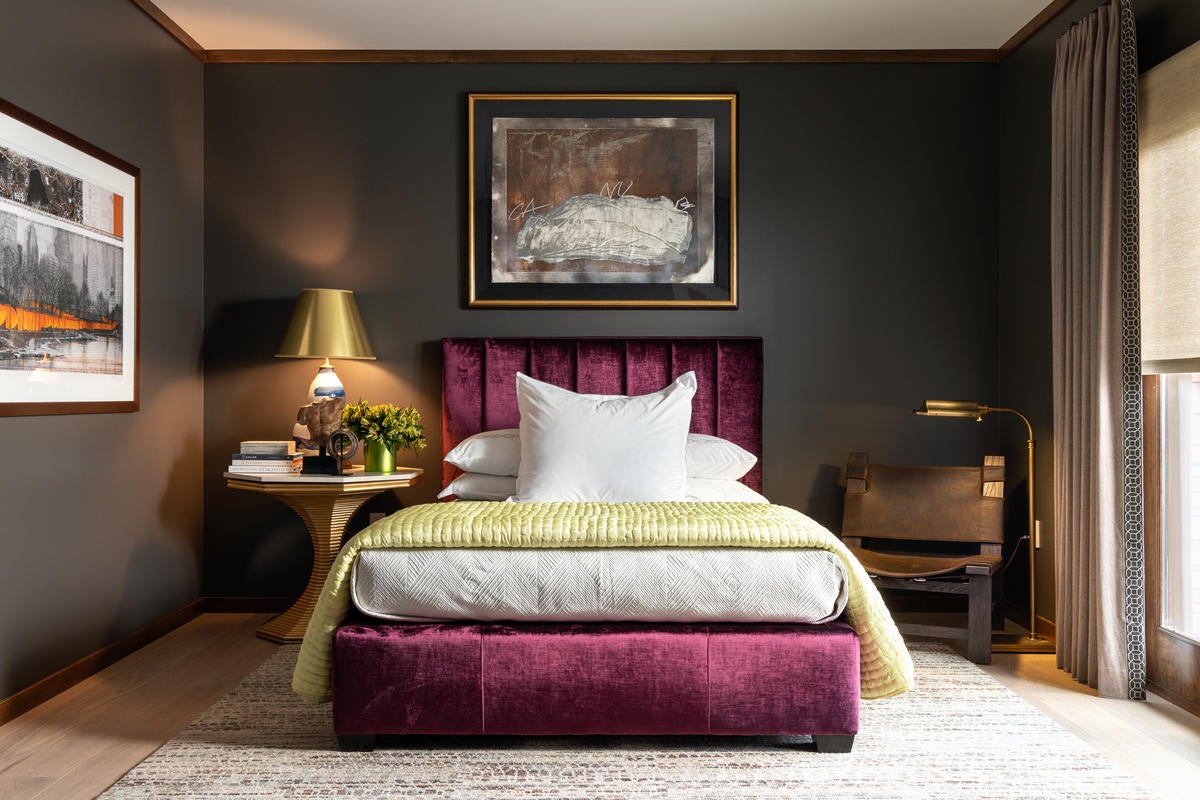
You mentioned that you’ve always been able to show clients what you’re thinking. What’s your presentation process?
I am frightening for people when it comes to colors and patterns. They say, “I don’t think it’s going to go together. I don’t get that.” But when I show them the schematic, they’re like, “OK.” I don’t always do 3D renderings, because I feel like that’s a slippery slope now. Everybody wants one, but I want people to really use their imaginations—or I’ll show them a quick sketch, just so they’ll get it. I like the element of surprise.
I think we’re in a society where they want to see everything first and then write a check. Sometimes I’m like, “No, let’s do this old-school.” We’ve gotten away from that, because everybody needs to see everything right now to understand it, and I don’t feel like you need to. I want clients to discover, like a child discovers themselves in an aquarium and they’re just in awe and they love it. That’s what I want for my clients.
Can you tell me about the local design scene and community in New Jersey?
For a long time, I thought being a designer in New Jersey was a disadvantage because I’m not a New York designer—I’m New York adjacent. I have to say to people, “I’m an interior designer located in New Jersey, but I work in New York.” You have to really follow up with that or they think you just do the three towns that surround you. It’s a 30-minute drive into the city, which is why we bought here. The further out you go, the longer you are on the train, even though you get so much more land. I’d rather be closer to the city with less land and pay more than be in the middle of nowhere and it takes me two hours to get home.
I feel like this is the perfect space for me because there’s a lot of opportunity here, but I have to be honest: I don’t normally do New Jersey design. There are a lot of people here that have multimillion-dollar homes and then are like, “Here’s a $40,000 budget.” Then you’re trying to explain that’s [a budget for] one room—or that’s just drapery for the room. The clients I do have in New Jersey have the big house but also the cash to follow it.
How many projects are you working on right now?
I only work on a maximum of four projects at a time.
And it’s just you, right?
Yes, and I have solid tradespeople. I have friends that are like, “You should grow.” But I’m good. I want a virtual assistant, which I am working on, but I really like my clients being able to have the conversation with me and not having so many people to go through. I have good boundaries in place—they know it’s Monday through Friday, and no one ever contacts me on the weekend. Or if they do, it’s with an apology and it’s by email, and they know I will not respond until Monday.
Do you still feel the pressure to grow the firm?
I vacillate. Some months, I want to be like my girlfriend Virginia Toledo of Toledo Geller. Then other days, I’m like, “No, you should do what works for you and what makes you happy.” It doesn’t make me any less of a firm, but that’s what I grapple with—I think there’s a stigma in this industry if you don’t have a design assistant, another lead designer and a CFO on staff. I have a person that handles my money, and I use Studio Designer. If you have everybody in place virtually, you’re good.
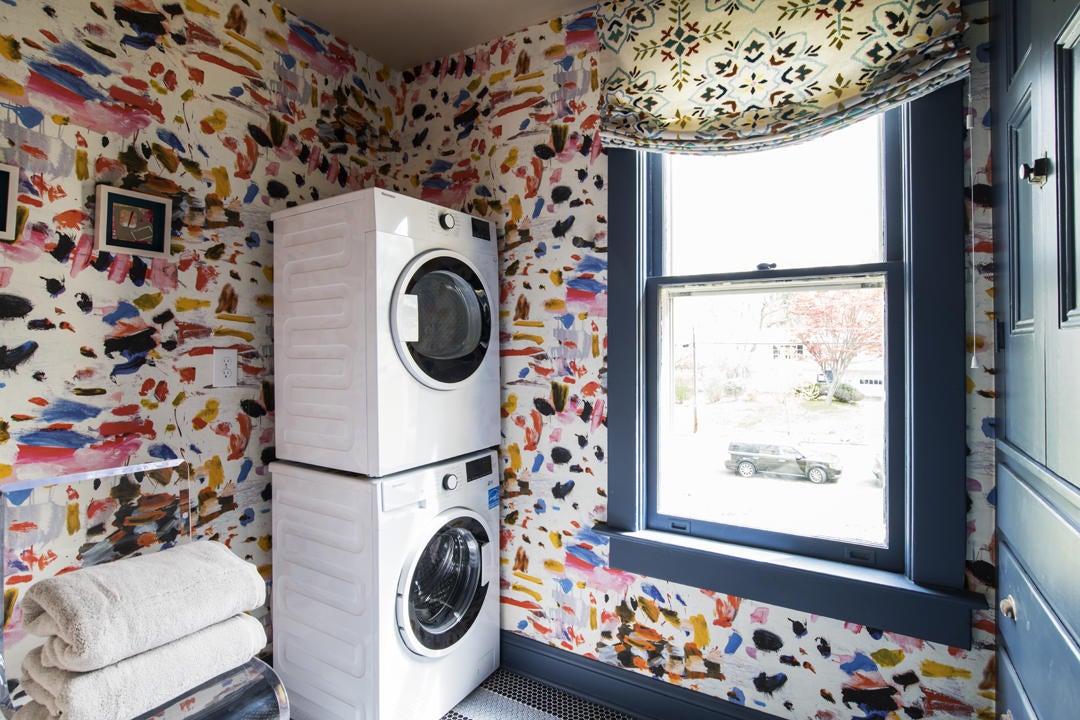
You work with Stemper & Associates for your bookkeeping. Do they handle your procurement and ordering, too?
From time to time. Other times, I’m like, “I got it.” I’m just so hands-on, but they can do it all, and I’m so grateful that I was turned on to them. Stemper is perfect because they’re like, “Gail, you took money out for this. What is that for? Send me the invoice.” I have a monthly call with them to go over my books, and I can text and be like, “Hey, I did this wrong,” or “I don’t understand what I did here.” They’ll correct it, send the steps [to do it the right way] and then actually go over it again on our next call. When Studio Designer has a webinar, I’ll get an email [from Stemper] that says, “Hey guys, this is something you should pay attention to. I’m hopping on this call, so if you don’t, just know that I will be there.” It feels really great.
When did you start working with them?
Last year.
And it has changed your business?
Oh, my God, yes! I knew I was profitable, but now I see my numbers and really understand them. Listen, I am a creative person, and numbers freak me the hell out. They really do. I do my best, but it’s challenging. I was having problems with the New York state sales tax, things like that, and they cleaned up my books from last year. All of a sudden, it was done. I’m so appreciative—of [the Stemper team] and of my business coach, Kimberley Seldon.
What is the biggest thing you’ve taken away from that relationship with Kimberly?
Boundaries, and how to set up and be a real professional. Her 15 design steps make [the process] seamless, and a client never asks, “Where are we in the process?” I hate this word, but just being a boss with your clients and showing up when you say you’re going to show up. I now send out weekly emails to my clients to let them know, “Here’s where we are—this is what happened, this is what we’re waiting for, this is what I need from you.” And that just shuts down everything else.
That’s a huge transformation.
I had a designer say to me, “My client’s upset because they didn’t realize that they had to buy the countertop for the cabinetry.” I was like, “Well, that’s not their fault. That’s yours.” She said, “I showed it in a rendering.” Of course, but you still have to walk them through the project. I make sure I walk through and go: “These lamps are $8,000. This sofa is $10,000. Here’s the fabric that goes with the sofa, which is why it’s now $15,000.” When you do that, the client will write the check. Whatever they don’t want, they’ll be like, “Let’s just hold off on that. Let’s do the other stuff.” Then, as they see everything starting to come together, they’re like, “Can you go back and order that? I’ll put the check in the mail.”
You have to work with your clients and explain things as if they are 3 or 5 years old—and that’s not being disrespectful. It’s just that it will alleviate a lot of the headache, a lot of the back-and-forth, and a lot of you being pissed and them being pissed. Nine times out of 10, when designers have gone wrong with their clients, it’s communication-related.
With only four projects going at a time, how do you decide what you say yes to?
It’s the feeling from the meeting. I think I’m decent at the red flags now. The whole running around and burning up gas, going back and forth into the city, calling all these different vendors, only to come back to the first thing you showed them—I’m not the designer for you. I charge hourly because I think a flat fee will have you getting people that you shouldn’t. I know other people that have mastered it, but I have not.
My most recent client, whose project I’m working on in the West Village, they found me from a list of Black designers. The husband gave the list to his wife, and she followed all of us on Instagram. She said there was something about me that seemed real and authentic, and my meeting with her was just easy. I know a lot of people like to talk about budgets, and some people don’t. I’ll ask, “What is your budget?” They’re like, “Show it to us. If we like it, we’ll buy it. If we don’t, we won’t get it.” And I don’t push back anymore, because anything I put in front of them, they’re like, “OK.” They just write the check.
It’s that easy?
I just push everything in front of them. I walk them through it, and then I’m silent. That’s it. When you are silent, there’s nothing for them to push back on. I go, “These lamps are $8,000, the sofa is $10,000, with the fabric it is $5,000. The window treatment is coming in at $18,000 [and so on]—and the total is $100,000.” And I’m just silent. And I don’t take deposits, either. When I’m like, “Here’s the number,” they’re like, “OK, I’ll have my accountant send you the money.”
These aren’t small checks!
When people say “affordable luxury,” that gets under my skin. You cannot go into a Maserati dealership with Toyota money. Luxury is not affordable. You can have something close to it, but it’s not affordable. We all aspire to be better, or at least I hope we do. But to be like, “Oh, this is affordable”—no, it’s not.
How do most of your clients find you?
I want to say it’s word-of-mouth, or they’ve been following me for a minute on Instagram, which is kind of crazy. And those lists.
When every design publication published a list of top Black designers last year, did that change the kinds of inquiries that came in to you?
It was uncomfortable and hilarious at the same time. It was hilarious because it’s like, “Oh, look, there’s Black designers.” But then it was also uncomfortable because it’s like, “Oh, look, there’s Black designers.” It was just like, “You know I’m talented, right?” Yes, I’m Black, but I also have talent. That’s what I’m leading with first, and my color should be second. But for me, it opened me up to a lot more people of color and a lot more Black inquiries—people who didn’t realize I was in their backyard because all they ever see is the white designers.
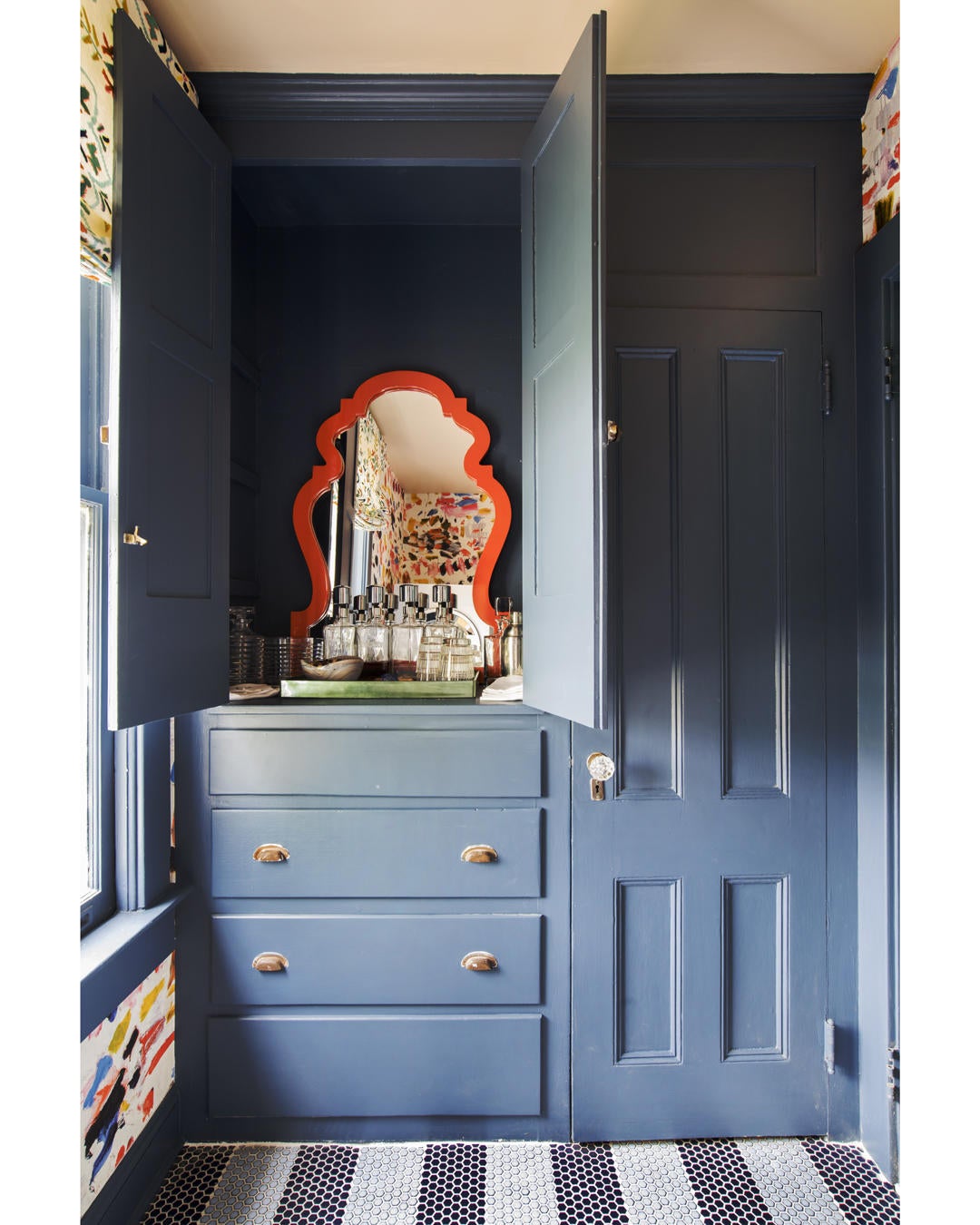
Do you want the one-room project, or are you only looking for whole homes? Where do you draw the line on what’s interesting to you?
I like the one room, and it usually leads to the whole house for me. I learned that from watching Toledo Geller—I worked with them for a month because I wasn’t sure I wanted to do design [or have my own firm] anymore. The project they sent me to was for basements. This client’s basement was kind of insane, but it’s beautiful now—and as we were leaving, they added on the main bedroom, the kids’ rooms and the living room. I think a lot of designers miss an opportunity when they’re like, “No, I have to have the whole house.” Sometimes, it’s just the client trying to see how the two of you will work. You don’t want to be stuck with a whole house and be like, “Oh, god, I’ve got to get rid of this bitch.” If you start with something small, all of a sudden, they’re like, “This is amazing.”
Wait, tell me about this moment when you thought you didn’t want to be a designer anymore. When was that?
About two years ago. I felt like the industry, the neighborhood, and the world was saturated with interior designers. I also felt like the people [I was meeting] didn’t want designers—they wanted an assistant to run to HomeGoods with them. It just became sad after a while, and I was like, “This is not what I want.” You meet people who buy the house because they need space, but then they don’t want to furnish said house—they’re like, “I’ll just go to West Elm.” I’m sorry, you just bought a house for $1.3 million, and you’re going to West Elm for your furniture? They say, “Well, I have kids. They’re going to damage it.” I’m like, “Or you could teach your children how to live with pretty things.” You need to teach them, and you’re never going to get your house where you want it to be, because there will always be something with the kids, the teenagers, the grandkids.
What got you re-excited about your business?
It was a client I ran into that reminded me of why I started. It was like God threw me a life raft. The person was like, “Hey, I need you to come to my space and can you just do it? I don’t even want to be involved. Just show me what you’re going to do, and when you have the presentation, I’ll give you the check.”
That’s amazing.
It reminded me of the happiness of being in this business.
The way the client said she would give you the check has me wondering—how do you approach billing? I know you’re hourly, but has that client conversation changed over time?
I bill at the end of every month. I send the bill out, and it’s due upon receipt. The check is in the mail or the money’s in my account within five days. I don’t have a problem. There’s nothing that they receive that they’re not aware of. My time is broken down, and I have codes for it, whether it’s an install, a meeting, administration, trade day. [My invoice has] a breakdown of everything—a blurb of what it is and how long I worked on it. Clients look at the bill, and they just write the check, and I’m done.
Does that weekly email help with that too? Because they’ve gotten a heads-up of how you’ve spent that time along the way.
Yes, there’s no guessing of what’s going on or what I’m doing. Sometimes it can be a really huge bill if we’re getting ready for an install, or it’s the beginning stages of the schematic and the presentation. Then, in between, when I’ve already ordered or I’m just doing little administrative stuff, it’s a small bill. But it’s always a breakdown—even when I have nothing to report, I go, “There’s nothing new to report, we’re still on course. Have a great weekend!”
Once again, it’s all about communication. No one cares that you’re creative. I had a different business coach who used to be a mentor to me, and she told me, “Once you take people’s money, you’re in business.”
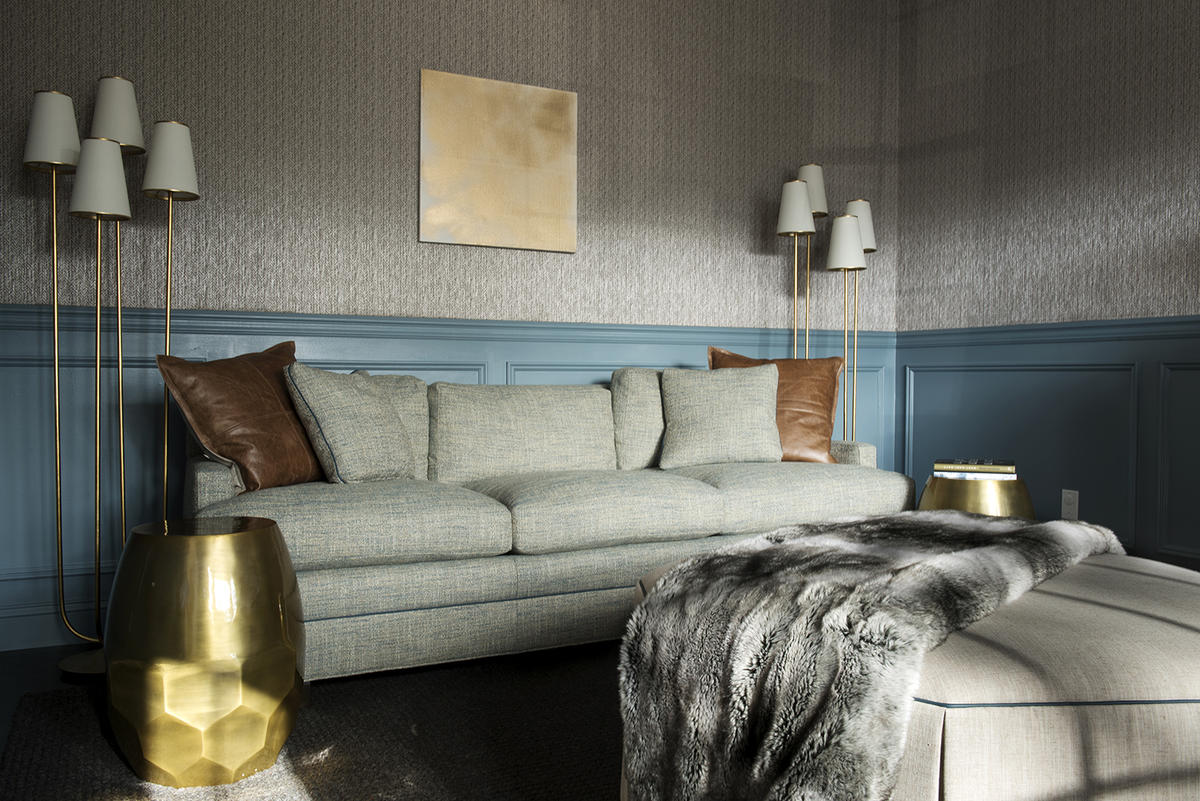
Where does your podcast fit into all of this, and how did you decide to launch that?
My podcast, Design Perspectives, [began with] me having drinks one night with [New York designers] Michael Adams and Courtney McLeod. I think Courtney was like, “You give great advice.” And Michael’s like, “You need to start a podcast.” [The show] started with me having conversations with different designers about what they want, or how this or that client didn’t work out. For me, the common denominator was always the communication aspect. I felt like once designers get communication on point, they won’t have issues with their client. Now I’m on my 77th episode.
Have your goals with the podcast changed?
I still want to speak to the trades and to designers, but it’s also about educating clients—I actually want to bring on more clients. It also took a different turn because I had the opportunity to speak out about racism last year. From what I understand, it was refreshing to hear from a person of color what it’s like on the daily to deal with the nonsense, and how race affects everything.
I’m so happy a lot more Black clients have shown up, because that’s something we have in common. When I finish their home, it’s my love letter to them. “This is your safe haven, where you can really feel love, feel empowered and be acknowledged.”
That’s really beautiful.
This goes back all the way to my grandparents. My grandmother lived to be 105, and she was the first generation born free. They bought a run-down house on Long Island from a white couple; when the man came back to the house a year later, he could not believe it was the same house [because they had fixed it up]. This man took my grandparents to court to say that they had stolen the house from him. Thank God the judge was a good judge and not a racist judge—he saw all the paperwork and dismissed it.
When I went to my grandparents’ house as a girl, there was just so much peace and love—and not just because my grandmother prayed. It just felt like love was everywhere. You sat down and you felt love. I know how impactful a home can be. Now, to be able to do it for people of color and give that to them—for anybody in general, I want that for every person. But if Black people hire me, they’re totally getting that.
How do you define your own success? What does that look like for you?
A house full of dogs, a happy husband, and just hanging out in my backyard laying in the grass. My yard is everything, but just coming home and turning the key, knowing that there are happy people and happy puppies inside who are excited to see you—that’s success to me.
What do you wish you had known when you were first starting out?
I think the biggest thing is to get your accountant first. Everybody wants to get a PR person, but you need your businesspeople first and foremost, or next thing you know, you could have a crazy $150,000 tax bill.
Beyond that, just be honest and remember why you got into it. People can wear you down. It’s not always roses, but you have to remember why you started and run your own race. Do not pay attention to Instagram. Instagram is a highlight reel, and you just have to ignore it. You just have to put your head down, work and keep going. Don’t look to the left or to the right—just do your best, present your work, show up when you say you’re going to show up, and be the best person that you can be to your client. If you look around, you will always feel like you’re behind the eight ball, and that’s such a horrible feeling. You will always feel like you’re missing out, and you’re not.
To learn more about Gail Davis, visit her website, find her on Instagram, and check out her podcast.















